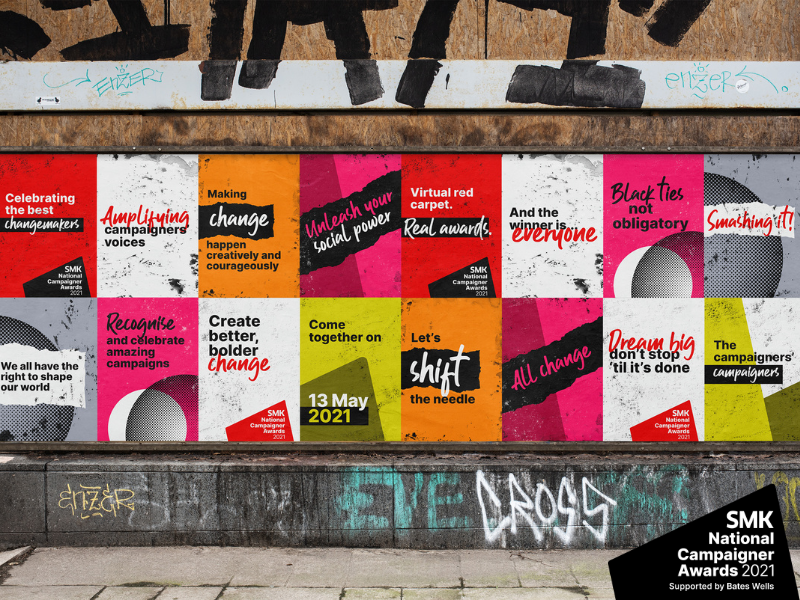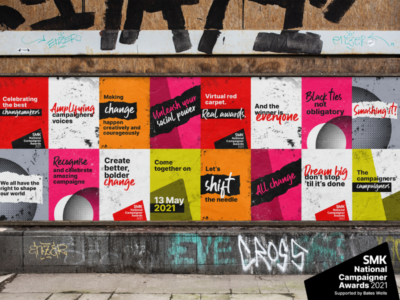Amplifying Voices Award
Black Lives Matter protests 2020

The Campaign
In the summer of 2020, the killing of George Floyd in Minneapolis was the catalyst for widespread anti-racism protests across the US. Though Floyd’s death took place in the US, the cry for racial justice was felt deeply across the world, inspiring a surge of BLM protests in the UK.
Although a number of groups had been organising under the BLM banner since the mid-2010s, the scale of these protests was far beyond what had been seen previously. More than 260 towns and cities held protests in June and July, from Monmouth in south Wales to Shetland in Scotland. At their heart was a new generation of young Black Britons.
The protests were rooted in the British experience of racism including:
- Racial discrimination in the criminal justice system, including the high rate of deaths of racialised minorities in police custody
- The Windrush scandal and the further damage to trust in government
- The lack of formal education about the realities of UK’s colonial past
- Racialised health inequalities, including higher Coronavirus death rates for Black Britons and people of colour
Black Lives Matter UK – https://blacklivesmatter.uk/
Tribe Named Athari – @TribeNAthari
All Black Lives – @AllBlackLivesUK
Sponsored by
The Change
By July 2020, more than 210,000 people had come out in support for the movement. British historians have described the demonstrations as the largest anti-racism rallies seen in the 20th or 21st century. They suggest that the only larger political movement in Britain’s history was the campaign to end the Transatlantic slave trade in the late 18th and early 19th centuries.
The toppling of the statue of slave trader Edward Colston in Bristol during a BLM protest became a potent symbol of the attempt to overthrow racism and the inequalities and injustices it causes. Colston’s philanthropy and influence in the city had long distorted his legacy of slavery and colonialism. The BLM protests brought this legacy to light on a national scale, with other statues of those with links to the Transatlantic slave trade also taken down in London, including Sir Hans Sloane and Robert Milligan. The national conversation led the Mayor of London to initiate a review into diversity across London’s public realm to ensure the capital’s landmarks suitably reflect London’s achievements and diversity.
These mass protests were also multiracial in makeup, taking place in towns and cities across the country, even those with few Black residents. They forced British society to confront some uncomfortable truths. As a result, some charities, companies and institutions have stated that the movement helped them change their practices to be fairer and more transparent. This includes anonymous job applications and a push for recruiting more diverse staff and boards.
The protests saw an overwhelming amount of business and companies ‘both big and small’ publicly declaring their backing for the movement, including Lego, Uber, Amazon, Etsy, Nike, Vogue and Sainsburys. The regional protests also saw much endorsement and support from local councils and politicians. This includes Liverpool, Leeds, and Wakefield councils lighting their civic buildings in purple to show solidarity with the protest movement and in honour of Floyd.
In February 2021, research by Kings College London found that inequalities between racial or ethnic groups are now considered one of the most serious forms of inequality in Britain today.
The Future
The power of the BLM movement inspired a genuine desire to support anti-racism work across the country. This led to an unprecedented level of donations to BLM organisations and anti-racism campaigns. For example, BLM UK received £1.2 million in funding from public donations that they have begun to distribute to other black-led organisations working on anti-racism, including other BLM groups.
Although significant strides have been made in just one year, the key demands protesters made last summer – an end to racial discrimination in criminal justice, an honest reckoning with Britain’s colonial past, the end to racial health disparities, and investment in social services for all – are yet to be met.
There’s still lots of work to do. The Police, Crime, Sentencing and Courts Bill making its way through Parliament, which lawyers have said could have a chilling effect on the right to protest and that Black activists involved in the BLM protests have played a key role in opposing, could make that work even harder.
Regardless of the challenges ahead, there’s no turning back.
Who else was involved?
The BLM protests involved hundreds of thousands people across the country, organised by hundreds of organisations and individual activists. The size and complexity of the movement, and the fact that many anti-racist activists in the UK have to remain anonymous for their own safety, mean that it’s impossible to credit one organisation or individual with driving the protests.
Some key influences were Black Lives Matter UK, a member-led campaigning organisation founded in 2016 who are now running a funding programme using some of the money raised in the summer, as well as the youth-led All Black Lives and Tribe Named Athari. A number of autonomous groups organised in the name of Black lives, and continue to work alongside longstanding campaigns against police violence and racism, like the United Family and Friends Campaign and work by the Runnymede Trust.

